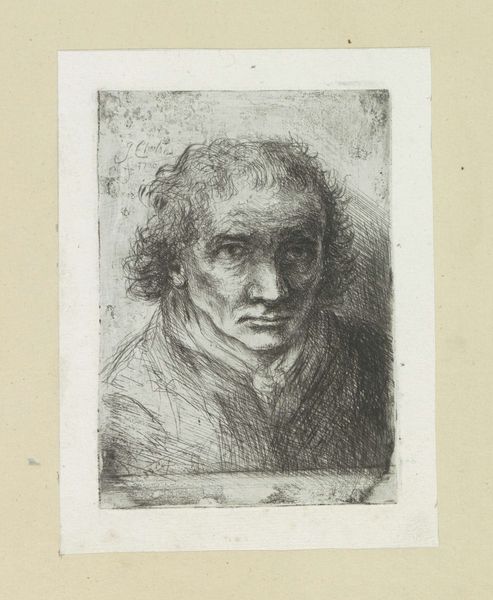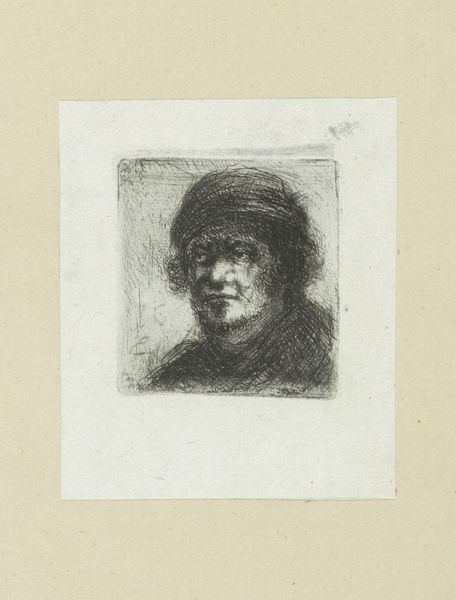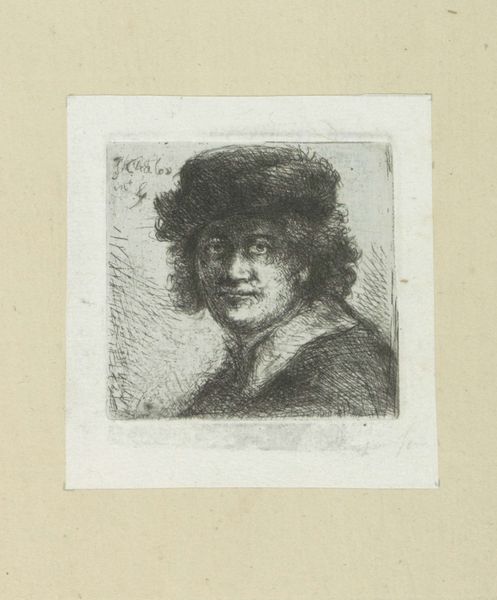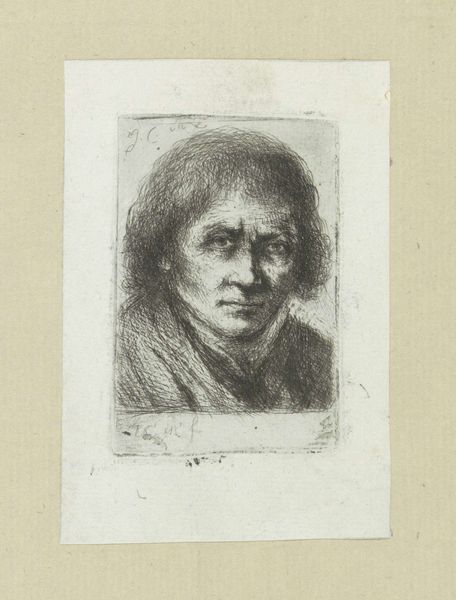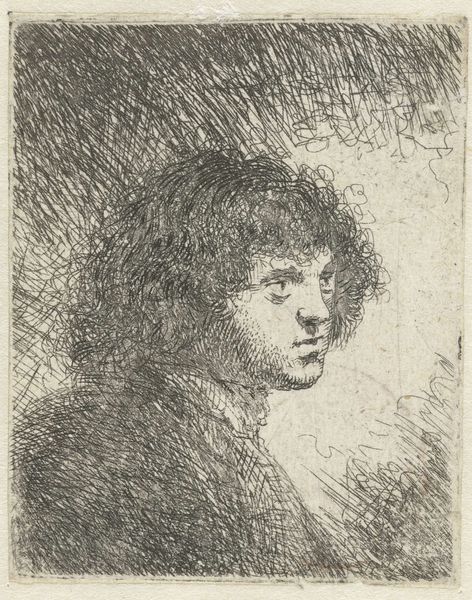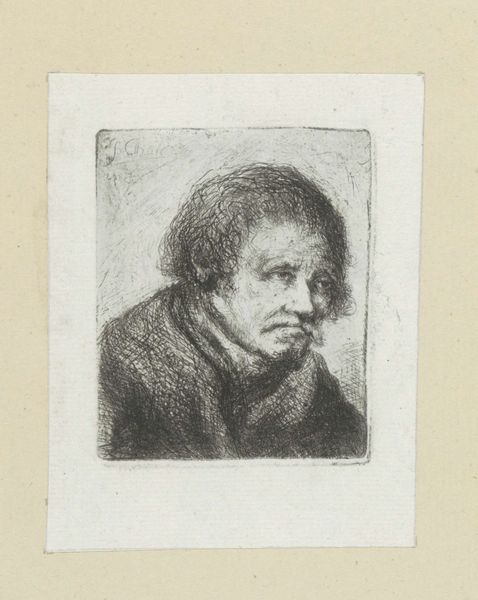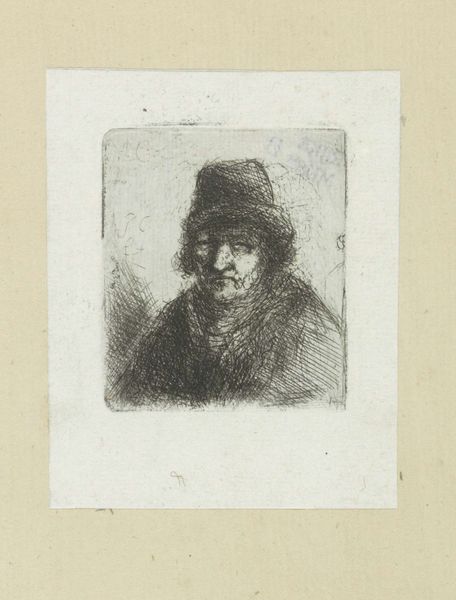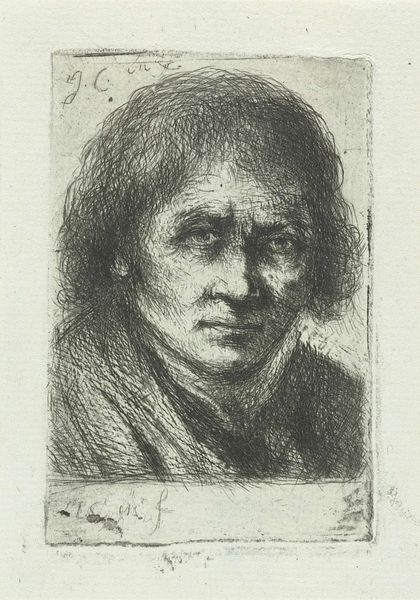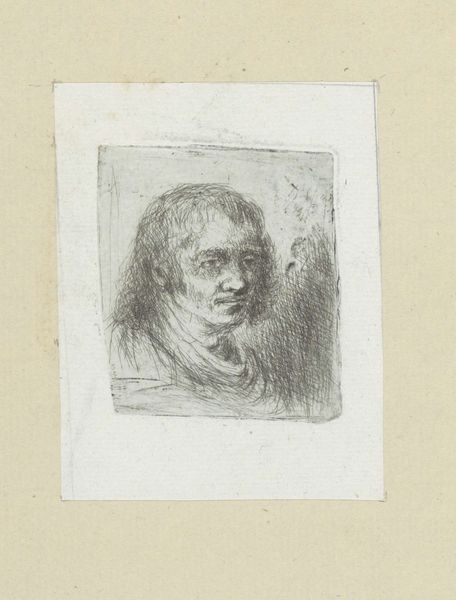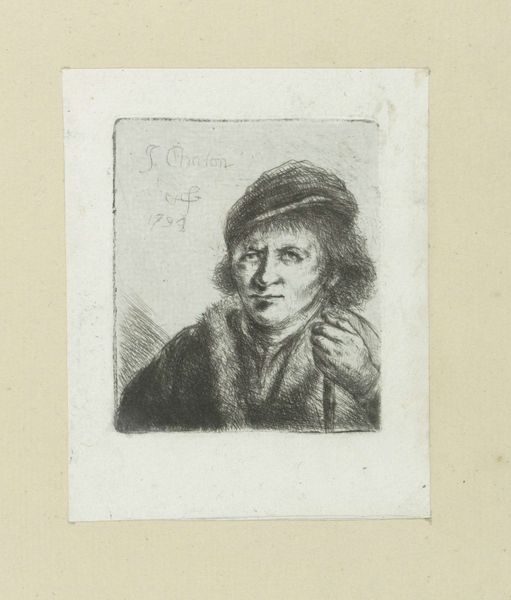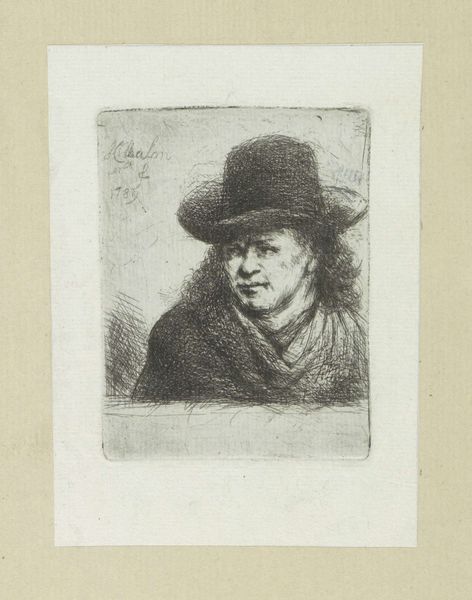
drawing, paper, ink
#
portrait
#
pencil drawn
#
drawing
#
amateur sketch
#
neoclacissism
#
aged paper
#
light pencil work
#
pencil sketch
#
light coloured
#
figuration
#
paper
#
personal sketchbook
#
ink
#
sketchbook drawing
#
pencil work
#
sketchbook art
Dimensions: height 60 mm, width 59 mm
Copyright: Rijks Museum: Open Domain
Curator: Let's discuss Jan Chalon's "Volwassen man, naar links," a drawing from 1802 rendered in ink and pencil on paper. Editor: My initial impression is one of intimate observation. It feels like a glimpse into the artist’s sketchbook, catching a candid moment. Curator: Indeed. It invites consideration of the Neoclassical ideals influencing even informal studies. The very support—paper—speaks to accessibility and dissemination of images. We see humble materials, not precious metals or grand canvases, but everyday stuff available due to developing industries. Editor: And that vulnerability. Look at the downcast gaze, the way the light catches the folds around his eyes, the weight of experience suggested through the very subtle iconography of shadow. I can't help but wonder what cultural narratives this individual would recognize and carry. What burdens are suggested by those soft creases? Curator: The cross-hatching technique used to create the tonal variations offers a compelling narrative as well. Consider the labor invested in creating these varying degrees of light and dark, the methodical layering that speaks to a careful production process, which is offset, as you say, by the intimate and almost sentimental subject matter. Editor: It evokes a deep, psychological resonance, as though Chalon sought to capture the universal essence of manhood rather than merely an individual likeness. Think of the countless portraits depicting philosophers and thinkers! Curator: Interesting thought, as it challenges the hierarchy often associated with Neoclassical portraiture. Instead of grand depictions of historical figures, Chalon elevates a simple man, questioning social status through the very act of portraying him with the same deliberate technique reserved for the powerful. Editor: The portrait as democratized object then, not merely a record but an emblem. The choice of an ordinary person might have seemed quite novel during the era, I would think. Curator: A pertinent detail, to remember the era and changing times in society. The social dynamics intertwined within the work's production and intention… fascinating, aren’t they? Editor: Absolutely, especially considered against those archetypes established within the period. This was a great viewing experience!
Comments
No comments
Be the first to comment and join the conversation on the ultimate creative platform.

